Since the NCAA tournament expanded to 64 teams in 1985, we've never seen a conference put 80 percent of its teams into the field. The Big 12 has a chance to do exactly that in 2018.
There's work to do, particularly for Texas and Baylor, if eight of the league's 10 teams are to make the field of 68. But before we get ahead of ourselves, let's revisit the league that set the record for NCAA tournament bids per capita: the 1990-91 Big East.
At the time, the conference consisted of nine members and sent seven to the Big Dance that March: Syracuse, Seton Hall, St. John's, Pittsburgh, Georgetown, Villanova and Connecticut. The Pirates and the Johnnies fared best, reaching the Elite Eight only to lose to UNLV and to eventual champion Duke, respectively.
The Big 12 can outdo that 78 percent success rate in a matter of days. Kansas, Texas Tech, West Virginia and TCU are all locks. Oklahoma is arguably the safest tournament bet in history among teams with a 7-10 conference record. That leaves Kansas State, Baylor and Texas as the last three pieces of this 80 percent puzzle. Of the three, the Longhorns appear to face the longest odds.
In the event of a regular-season-ending loss at home to West Virginia, for example, the Longhorns would be 17-14 overall with a 7-11 record in Big 12 play. Those numbers don't scream at-large bid, though neutral-court, double-digit wins over Butler and Alabama could help offset those bottom lines.
Of course, this suspense will continue next week at the league's tournament in Kansas City. Any neutral-floor win against the Jayhawks, Red Raiders, Mountaineers, Horned Frogs or Sooners will qualify as a Quadrant 1 victory.
Can the Big 12 make history? It may take Texas winning against West Virginia, a respectable showing at the conference tournament by the loser of the upcoming Baylor-Kansas State game, and some level of cooperation from the rest of the field. (No bid thieves, please.)
But, yes, the Big 12 has a shot at history in 2018. The league office will want to be getting those "80 PERCENT 2018" T-shirts and ball caps ready even as we speak.
(Included for each bubble team is its ranking in four metrics: RPI; ESPN's strength of schedule (SOS); Basketball Power Index (BPI), which is a predictor of a team's performance going forward; and strength of record (SOR), which is a measure of a team's accomplishment based on how difficult its win-loss record is to achieve.)
ACC | Big 12| Big East | Big Ten | Pac-12 | SEC | American | Others
ACC
Locks

Virginia (27-2, 16-1 ACC)
(BPI: 2 | SOS: 29 | SOR: 1 | RPI: 1)

Duke (24-6, 12-5 ACC)
(BPI: 4 | SOS: 14 | SOR: 6 | RPI: 4)

North Carolina (22-8, 11-6 ACC)
(BPI: 8 | SOS: 2 | SOR: 8 | RPI: 6)

Clemson (22-7, 11-6 ACC)
(BPI: 17 | SOS: 30 | SOR: 12 | RPI: 8)

Miami (21-8, 10-7 ACC)
(BPI: 34 | SOS: 50 | SOR: 19 | RPI: 25)

Virginia Tech (21-9, 10-7 ACC)
(BPI: 29 | SOS: 41 | SOR: 23 | RPI: 48)

Should be in

NC State (20-10, 10-7 ACC)
(BPI: 48 | SOS: 51 | SOR: 38 | RPI: 59)
A loss at Georgia Tech puts the Wolfpack at 10-7 in the ACC heading into the season finale at home against Louisville. Kevin Keatts' team is projected as a No. 8 or No. 9 seed.
One thing to watch with the Wolfpack in the NCAA tournament is the kindness of the perimeter. Few teams in the bracket will derive more of an advantage, relative to opponents, from 3s. In ACC play, NC State ranks third in the league in 3-point accuracy (38.5 percent). Conference opponents, meanwhile, have hit just 31.7 percent of their attempts from beyond the arc.

Florida State (19-10, 8-9 ACC)
(BPI: 37 | SOS: 36 | SOR: 36 | RPI: 46)
Certainly, the selection committee cannot unduly ding the Seminoles for consecutive losses at NC State and Clemson. That being said, the time for such indulgences is now past.
FSU closes the season against Boston College, which just beat Syracuse by 15 points. A loss to the Eagles would leave the Noles at 8-10 in ACC play heading to the conference tournament. There are quality wins both at home (North Carolina, Clemson) and on the road (Florida, Virginia Tech, Louisville) on this résumé. Beating BC and finishing .500 in league play would shore things up nicely.
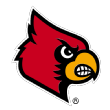
Louisville (19-11, 9-8 ACC)
(BPI: 31 | SOS: 39 | SOR: 43 | RPI: 42)
Allowing the opposing team to score five points in the game's final second is not the optimal method for impressing the committee. Nevertheless, Louisville is still projected to make the field as one of the last four teams in the bracket, even after the Cardinals' stunning 67-66 loss at home to Virginia.
In itself, losing at home to the No. 1 team in the nation is nothing more than a missed opportunity profile-wise. Still, in advance of the Cards' final game at NC State, David Padgett's team has opened itself to an added degree of uncertainty by staying where they are instead of moving up.

Work to do

Syracuse (18-12, 7-10 ACC)
(BPI: 51 | SOS: 46 | SOR: 56 | RPI: 46)
The Orange have dropped three straight games, and a loss at home to Clemson in the season finale would put them in clear "miracle necessary" territory heading into the ACC tournament.
The question is whether Syracuse is in that territory already. Joe Lunardi has the Orange on his "first four out" list, and history suggests one or more of their bubble rivals will record a strong profile-enhancing finish from here to Selection Sunday. Earning an at-large bid looks tougher than it did just 10 days ago.

Notre Dame (18-12, 8-9 ACC)
(BPI: 32 | SOS: 54 | SOR: 59 | RPI: 67)
It's time to talk about the Fighting Irish. Bonzie Colson returned to the lineup after a lengthy absence because of injury. He scored 12 points and grabbed 9 rebounds in 21 minutes in Wednesday's win over Pitt. The Fighting Irish are 12-3 with Colson and 6-9 without him, a stretch that included almost the entire ACC season.
Notre Dame is just one season-ending, shock-the-world win at Virginia away from finishing 9-9 in the ACC. Is an upset in Charlottesville likely? Perhaps not. But keep in mind that on paper, a Notre Dame team that played without Colson for the balance of the conference season is as good as, if not better than, Miami, NC State or Virginia Tech in per-possession terms.
Keep an eye on Notre Dame.

Big 12
Locks

Kansas (24-6, 13-4 Big 12)
(BPI: 7 | SOS: 12 | SOR: 7 | RPI: 5)

Texas Tech (22-8, 10-7 Big 12)
(BPI: 12 | SOS: 31 | SOR: 18 | RPI: 24)

West Virginia (22-8, 11-6 Big 12)
(BPI: 9 | SOS: 32 | SOR: 17 | RPI: 29)

TCU (21-9, 9-8 Big 12)
(BPI: 21 | SOS: 24 | SOR: 21 | RPI: 19)

Should be in

Oklahoma (17-12, 7-10 Big 12)
(BPI: 44 | SOS: 1 | SOR: 34 | RPI: 35)
If the Sooners win at home against Iowa State on Saturday, this fascinating weekslong discussion on their tournament chances should, finally, be over. An 8-10 record in the Big 12 would put Oklahoma in good shape for an at-large bid. That win is likely to happen, so Oklahoma shows up here under "should be in."
But make no mistake: OU somehow losing to Iowa State in Norman would mean all bets are off. Bracket forecasts may still predict a bid for the Sooners in that eventuality, but: (A) those forecasts aren't the committee and (B) the truth is we haven't seen a team with a profile this good (road win at Wichita State, neutral-floor victory over USC) carrying a conference record this bad (it would be 7-11) in decades.
Treat all such predictions with caution, because the truth is there's no applicable precedent, at least not in this century.

Work to do

Kansas State (20-10, 9-8 Big 12)
(BPI: 49 | SOS: 37 | SOR: 32 | RPI: 62)
Sometimes, it seems like the Wildcats are going to get into the field of 68 with no one noticing. They haven't elicited much in the way of discussion in terms of their profile or seeding, possibly because everyone agrees that they're likely to land somewhere around No. 10 or No. 11. That's better than the alternative, certainly, but there's still work to be done in Manhattan.
Kansas State hosts Baylor on Saturday and a win would mean a 10-8 conference record, the best mark it has posted in four years. A loss would increase the level of uncertainty faced by a team that doesn't quite have everything buttoned up just yet.

Baylor (18-12, 8-9 Big 12)
(BPI: 35 | SOS: 9 | SOR: 40 | RPI: 55)
Even with a loss at home to West Virginia and one on the road to TCU, the Bears had an exceptionally good February. They were 2-7 in the Big 12 entering the month and not exactly monopolizing Bubble Watch's attention.
Now look. Baylor went 6-2 in February with home wins over Kansas, Texas Tech and Oklahoma and a win at Texas, enough to land it on the safe side of the bubble for now.

Texas (17-13, 7-10 Big 12)
(BPI: 42 | SOS: 3 | SOR: 41 | RPI: 59)
Bubble Watch is feeling hyperbolic. The Longhorns' season finale against West Virginia in Austin is the program's most important game since that rather remarkable game against Northern Iowa in the round of 64 two years ago.
A loss would mean a 7-11 finish in Big 12 play, and, as noted in the Oklahoma section, the past history of teams with that kind of conference record is one unbroken 20-year howl of Selection Sunday disappointment.
Mohamed Bamba's status for the game against the Mountaineers is uncertain because of a toe injury.

Big East
Locks

Villanova (26-4, 13-4 Big East)
(BPI: 1 | SOS: 20 | SOR: 3 | RPI: 2)

Xavier (26-4, 14-3 Big East)
(BPI: 13 | SOS: 27 | SOR: 2 | RPI: 3)

Butler (19-11, 9-8 Big East)
(BPI: 24 | SOS: 25 | SOR: 39 | RPI: 41)
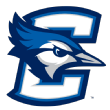
Creighton (21-9, 10-7 Big East)
(BPI: 20 | SOS: 49 | SOR: 24 | RPI: 33)

Seton Hall (20-10, 9-8 Big East)
(BPI: 30 | SOS: 28 | SOR: 30 | RPI: 28)

Work to do

Providence (18-12, 9-8 Big East)
(BPI: 73 | SOS: 23 | SOR: 46 | RPI: 40)
If it seems incongruous for a team with wins over Villanova and Xavier to be in such precarious bubble position, perhaps part of the explanation goes back to the quadrants the selection committee is using as part of its criteria.
With the potential exceptions of Marquette and/or Washington, Providence has yet to beat an at-large-level opponent away from home. That fact can be overwritten at the Big East tournament, of course, and doing so would be in the Friars' best seeding interest.

Marquette (17-12, 8-9 Big East)
(BPI: 46 | SOS: 11 | SOR: 47 | RPI: 64)
Bubble Watch hesitates to use the term "one-game season," but the importance of Marquette's season finale at home against Creighton is difficult to overstate. If the Golden Eagles win, they're still alive for an at-large bid (though it will be no sure thing). Lose, and those bid probabilities drop significantly.
They've already beaten the Bluejays in Omaha, and they also boast a season sweep of Seton Hall. Still, to get those boasts heard where they will matter, one last regular-season win will likely be required.

Big Ten

Locks
Michigan State (28-3, 16-2 Big Ten)
(BPI: 6 | SOS: 62 | SOR: 4 | RPI: 13)

Purdue (26-5, 15-3 Big Ten)
(BPI: 3 | SOS: 43 | SOR: 5 | RPI: 10)

Ohio State (24-7, 15-3 Big Ten)
(BPI: 16 | SOS: 48 | SOR: 11 | RPI: 18)

Michigan (25-7, 13-5 Big Ten)
(BPI: 18 | SOS: 55 | SOR: 10 | RPI: 26)

Work to do

Nebraska (22-9, 13-5 Big Ten)
(BPI: 59 | SOS: 59 | SOR: 34 | RPI: 52)
The good news for the Cornhuskers is that Michigan survived a surprisingly close overtime game against Iowa and advanced to the Big Ten tournament quarterfinals to meet Tim Miles' team. Being bracketed with the Wolverines gives the Huskers the only Quadrant 1 opportunity possible in the quarters for a team seeded on one of the league tournament's top four lines.
Now Nebraska has to win the game. Doing so would give the Huskers their second victory over Michigan and set up a potential meeting with Michigan State in the semifinals. A Huskers team currently projected as one of the "first four out" can put every part of that previous sentence to good use.
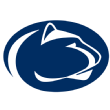
Penn State (20-12, 9-9 Big Ten)
(BPI: 28 | SOS: 63 | SOR: 63 | RPI: 81)
The Nittany Lions are not going to be in the NCAA tournament ... unless Pat Chambers' team records its third win of the season against Ohio State in the Big Ten tournament quarterfinals.
Even then, a victory against the Buckeyes Friday, by itself, most likely won't be enough to lift this team into the bracket. But it will open the door a crack, and it would most definitely make PSU the most prominent new entrant in the bubble discussion.

Pac-12
Locks
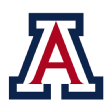
Arizona (23-7, 13-4 Pac-12)
(BPI: 23 | SOS: 70 | SOR: 29 | RPI: 17)

Should be in

Arizona State (20-9, 8-9 Pac-12)
(BPI: 43 | SOS: 74 | SOR: 55 | RPI: 39)
This team is on track to make the tournament as something in the neighborhood of a No. 9 seed. That might sound low for a group that beat Kansas in Lawrence, but the Sun Devils are currently 8-9 in Pac-12 play.
A home finale against Stanford gives ASU a good chance to finish league play with a .500 record. The only potential dark cloud on this horizon is a Pac-12 tournament bracket that could put ASU in the first round against a zero-reward, all-risk opponent like Washington State or Oregon State.

USC (21-9, 12-5 Pac-12)
(BPI: 45 | SOS: 76 | SOR: 54 | RPI: 32)
Few teams exemplify the distinction between performance and profile better than the Trojans. They're rather highly esteemed by the numbers, for example, thanks in no small part to a defense that manages the rare trick of forcing turnovers without committing fouls.
But USC did its profile no favors with an 0-3 stretch against Texas A&M, SMU and Oklahoma in November and December, and it was given no home games against Arizona and Arizona State. It explains why a team poised to perhaps finish second in the Pac-12 is still parked among Lunardi's "last four in" teams.

Work to do

UCLA (19-10, 10-7 Pac-12)
(BPI: 59 | SOS: 65 | SOR: 60 | RPI: 52)
The temptation is to label the Bruins' final game at USC as a make-or-break game, but even with a loss, they can still play their way into the field with a strong performance in the Pac-12 tournament.
That being said, a season sweep over the Trojans would be a nice bullet point to add to a résumé that includes a neutral-floor victory over Kentucky and a win at Arizona. UCLA likely requires one last push to crash this party.

Utah (18-10, 10-7 Pac-12)
(BPI: 77 | SOS: 66 | SOR: 65 | RPI: 52)
There's no change for Utah as it marks time until it can do a long-shot bid for the committee on the stage afforded by the Pac-12 tournament.
Granted, the season finale at home against Colorado is next on the agenda. A win would leave Utah right where it already is, on Lunardi's "next four out" list, with plenty of work yet to be done. A possible No. 4 seed in the Pac-12 tournament would come in handy if it set up a potential game against Arizona in the semifinals.

Washington (20-10, 10-7 Pac-12)
(BPI: 108 | SOS: 80 | SOR: 67 | RPI: 45)
A 79-77 win at home over Oregon State gives the Huskies a 10-7 Pac-12 record and sets up the last game of the season in Seattle against Oregon. Mike Hopkins' team is starting March in the same spot where it was for much of February, on Lunardi's "first four out" list.
Getting off that list and into the field of 68 will mean winning games against quality opponents in the conference tournament. There will be more than one Pac-12 team trying to do precisely that in Las Vegas.

SEC
Locks

Auburn (24-6, 12-5 SEC)
(BPI: 15 | SOS: 61 | SOR: 15 | RPI: 7)

Tennessee (22-7, 12-5 SEC)
(BPI: 14 | SOS: 5 | SOR: 9 | RPI: 9)

Kentucky (21-9, 10-7 SEC)
(BPI: 26 | SOS: 21 | SOR: 20 | RPI: 15)
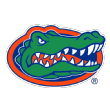
Florida (19-11, 10-7 SEC)
(BPI: 27 | SOS: 13 | SOR: 37 | RPI: 43)
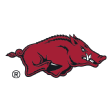
Arkansas (21-9, 10-7 SEC)
(BPI: 36 | SOS: 53 | SOR: 27 | RPI: 27)
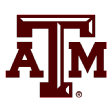
Texas A&M (19-11, 8-9 SEC)
(BPI: 38 | SOS: 6 | SOR: 31 | RPI: 21)

Work to do
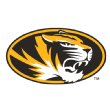
Missouri (19-11, 9-8 SEC)
(BPI: 50 | SOS: 45 | SOR: 45 | RPI: 37)
Trailing at halftime against Vanderbilt on Tuesday, Missouri's tournament prospects were as bleak as they had been in weeks. A 44-point second half ensured a Tigers win, and though they aren't in the clear entirely, a win at home Saturday would remove all doubt.
Conversely, a loss to the Hogs wouldn't necessarily be catastrophic as long as Missouri makes a decent showing in the SEC tournament.
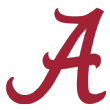
Alabama (17-13, 8-9 SEC)
(BPI: 54 | SOS: 38 | SOR: 62 | RPI: 57)
Alabama is living dangerously. The Crimson Tide lost home games to Arkansas and Florida, the latter by 21 points. Now, at 8-9 in SEC play and clinging to the No. 10-seed line in projected brackets, they will go to Texas A&M for their regular-season finale.
A win in College Station would fix a good deal of what ails the Tide. A .500 record in the SEC with a season sweep of the Aggies, to go along with a win at Florida and wins at home against Auburn and Tennessee, is certainly bid-worthy on paper.
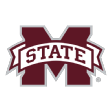
Mississippi State (21-9, 9-8 SEC)
(BPI: 64 | SOS: 69 | SOR: 49 | RPI: 65)
The Bulldogs are tenaciously holding on to their spot on Lunardi's "next four out" list, but as March dawns, the obstacles between this team and the field of 68 appear formidable. Can Mississippi State earn one of the last at-large bids with anything short of a run to the SEC tournament title game? Good question.
MSU's regular-season finale at LSU falls just outside the Quadrant 1 window, though a win there would at least give it an impressive 10-8 finish in conference play. There's still work to do.

American
Locks

Cincinnati (26-4, 15-2 AAC)
(BPI: 5 | SOS: 81 | SOR: 13 | RPI: 11)

Wichita State (24-5, 14-3 AAC)
(BPI: 11 | SOS: 68 | SOR: 16 | RPI: 12)
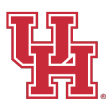
Houston (23-6, 13-4 AAC)
(BPI: 19 | SOS: 72 | SOR: 22 | RPI: 20)

Others
Locks

Gonzaga (27-4, 17-1 WCC)
(BPI: 10 | SOS: 100 | SOR: 14 | RPI: 30)

Rhode Island (23-5, 15-2 A-10)
(BPI: 33 | SOS: 93 | SOR: 26 | RPI: 15)

Nevada (26-5, 15-2 MWC)
(BPI: 25 | SOS: 113 | SOR: 28 | RPI: 13)

Should be in

Saint Mary's (27-4, 16-2 WCC)
(BPI: 22 | SOS: 245 | SOR: 42 | RPI: 38)
No change for the Gaels, who await the winner of Santa Clara-Pepperdine in the WCC tournament. They are playing to improve their seed (currently projected as a No. 9 or No. 10), though it hardly needs to be added that a quarterfinal loss would put them in some degree of jeopardy.
Good thing for Saint Mary's is that is very unlikely. More probable is a semifinal date with either BYU or San Diego en route to a potential third and deciding go-round with Gonzaga in the WCC title game.

Middle Tennessee (24-5, 16-1 C-USA)
(BPI: 40 | SOS: 99 | SOR: 25 | RPI: 22)
It's possible the Blue Raiders are running out of ways to impress the committee. Kermit Davis Jr.'s team hasn't lost a game in six weeks and, in MTSU's latest outing, the Raiders brushed Western Kentucky aside 82-64 in Murfreesboro.
Middle Tennessee will be the favorite to win Conference USA's automatic bid, but even if that doesn't happen, an at-large bid could be feasible for a team currently being projected as a No. 11 seed.

St. Bonaventure (23-6, 13-4 A-10)
(BPI: 56 | SOS: 86 | SOR: 35 | RPI: 23)
The Bonnies are coming off a triple-overtime 117-113 win at home against Davidson, a victory that gives them sole possession of second place in the Atlantic 10 behind Rhode Island.
On paper, they're still a projected No. 11 seed. However, their situation may (repeat, may) be rather less precarious. A potential loss at Saint Louis in St. Bonaventure's regular-season finale, for example, wouldn't appear to be a clear and categorical bid-killer, particularly not if followed by a win or two at the A-10 tournament.

Previous Bubble Watch editions: Feb. 6 | Feb. 9 | Feb. 12 | Feb. 16 | Feb. 20 | Feb. 23 | Feb. 27
